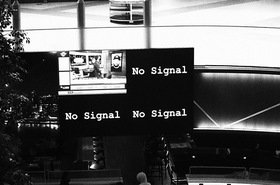Communications as we know it has been around for over 1,000 years, perhaps more. One popular method of communicating on the scale of a county or country used to be lighting beacons. Historically, beacons were fires that were created and lit to convey a message to local people, typically the approaching of an enemy or even significant news. Beacons were positioned on high geographical points so that a chain of messaging could be made, sometimes through the brightness of the fire, and sometimes through smoke patterns.
Last year, while in the UK, I experienced the tradition of a ceremonial lighting of a beacon where my family lives. This event is conducted for a royal anniversary, and in this case, it was Queen Elizabeth’s 70th or Platinum Jubilee. While this type of communication was not necessary in today’s age for the celebration, the systematic lighting of beacons in local towns provided a basis to convey a message of respect throughout the country.
Today, we really don’t need beacons, but what we do need is an efficient architecture to convey information. We call this the internet, a network that is essentially composed of a complicated mesh network of fiber optic cables. This network spans the world and is used in data centers, telecom switches, backhaul networks for 5G, and applications when optical fiber is used to reach buildings and/or homes at the edge of the network. Some of us are lucky in that we actually have fiber optics reaching our home, but others have electrical wires that connect our home to the fiber optic network. Either way, most of us have the luxury of being able to send and receive messages and information directly from our computer systems.
Why electro-optic polymers and why the Internet?
One of the most important optical components for the Internet and optical networking is called an optical modulator. This tiny device is used in huge volumes everywhere a laser sends light down a fiber optic cable. We need lasers to send the light as this becomes the digital information that we use to communicate on the Internet.
Today, optical modulators are built from semiconductor materials such as Silicon (Si), Indium Phosphide (InP), and bulk Lithium Niobate (LiNO3). Unfortunately, these semiconductor materials are suffering from a saturation of performance. They are struggling to handle the ever-increasing demand for higher data rates, and when they do, more power is consumed – which is something the internet operators and the people who run the data centers are looking to mitigate significantly. Sometimes an incumbent technology runs out of steam and is on the ragged edge of performance, allowing for a new technology platform to emerge that has a lot of headroom to increase performance. This is one of those times, and over the past few years, people have been taking a careful look at electro-optic polymers.
Modulators created from specially designed electro-optic polymers are naturally fast, and naturally low power in their design. In fact, they are at least 2-3x faster in operation and as much as an order of magnitude (10x) lower in power consumption. It is not often that Mother Nature works with technologists, and this is one of those situations. The inherent, high-performance properties are giving network designers and architects a wonderful new opportunity to design optical networks to handle faster data and lower power consumption, not only for next-generation telecom and datacom, data center equipment (such as routers, servers, switches etc.), but for equipment planning over the next decade or two.
The impact of electro-optic polymers on the Internet
The impact of a faster and lower power electro-optic modulator can have far-reaching effects in today’s world where industry, corporations, and manufacturing require higher data rates. The modulator allows easier access to higher-quality data flow, which in turn permits a higher quality of information and more efficient product development. While as consumers we want more speed for our personal or professional use, the march to lower power consumption is key for data centers today and where they are heading over the next decade. Both high-speed and low-power have become important design criteria for next-generation network architectures that are expected to evolve in coming years.
This is forcing optical network architects and optical network planners to rethink their technology strategy. They are being pushed into figuring out how to increase the optical device speed to convey more information, knowing full well that over the past decade, optical modulators using semiconductors have not increased in speed whatsoever. They are also being pushed into figuring out how to reduce power consumption. In fact, our Internet network architects have been smart, they have used complex and power-hungry electronics such as digital signal processors (DSPs) to clean up the optical signals, and increase data rates using electronic tricks such as encoding symbols such as Pulse Amplitude Modulation (PAM) with 4 levels and Quadrature Amplitude Modulation (QAM), among others. The downside in doing this is that while data rates have increased a little, power consumption has risen through the roof, thereby making the strategy questionable.
Electro-optic polymers enable faster optics, and thus allows network architects and designers to have the option to significantly lower power consumption while using faster, cleaner optics using electro-optic polymer optical modulators. It is a potentially high-paying strategy, and one that has generated much interest in the Internet industry over the past couple of years.
Scaling volume of electro-optic polymers
Electro-optic polymers can be manufactured in large silicon foundries. These are fabrication plants that focus on silicon semiconductors, and have traditionally set up their process design kits (PDKs) for ICs. Over the past few years, many silicon foundries have been looking at increasing their wafer throughput by servicing silicon photonics solutions. It is these foundries that are the catalyst for volume scale when electro-optic polymers are added to silicon photonics.
To have electro-optic polymer modulators ubiquitous across the industry, key milestones are being achieved at record pace: advanced and mature electro-optic polymers, simple and standard fabrication in large scale volume, and packaged optical modulator devices as part of a high-performance ‘vehicle’ for network components such as pluggable optical transceivers. The electro-optic polymer industry for fiber communications is growing quickly. With the correct positioning for scale, volume, and performance, electro-optic polymers are well poised to enable network architects, designers, and planners to scale the Internet and optical network to be much more competitive soon.
We have grown past the tradition of lighting beacons to communicate as our appetite for information has increased, along with our desire to both send and receive it more quickly. This means that faster, cleaner optics that is more power efficient is critically needed. A few years ago, electro-optic polymers were pushing for a place in the network; today, electro-optic polymers are being leveraged by the Internet industry as they represent a new and exciting leaf for communications. Perhaps one day, we will have a tradition of lighting electro-optic polymer modulators across the country like beacons to honor the potential achievement they can bring.





